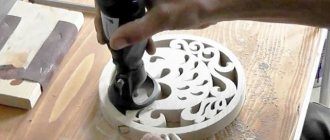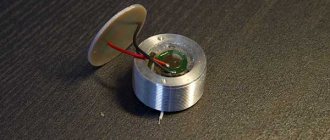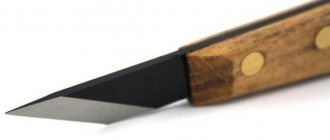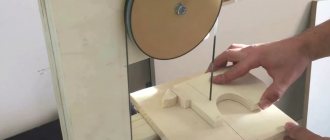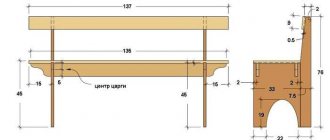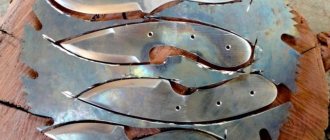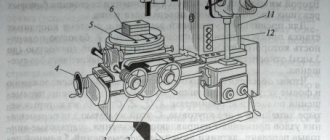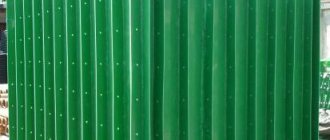How to make original chess with your own hands
Chess is one of the oldest and most majestic games.
People of all ages and social statuses adore them. This game was invented in India and quickly spread across all continents and countries. Entire generations of people have fallen in love with chess because of its unpredictability and variability. Nowadays, many international competitions are held in this game. Thousands of people from all over the world are fighting for the chess crown. This game helps develop logical thinking and the ability to calculate your actions in advance. Chess is made from a wide variety of materials. There are figurines made of gold and other precious metals, precious woods, crystal, ivory and other expensive materials. Since most people cannot afford such chess, you can buy ones made from the simplest materials or make them yourself.
White starts and wins.
Chess was in every family. Wooden, standard and no frills. Masterly carving was not used in them. But chess can also be beautiful! Wood carving exists to turn them into a work of art.
32 figures – there is room for your creative imagination to run wild! And since chess is not played on the floor, you can also make a table. In one style, using all the possibilities of wood carving.
What kind of chess do woodcarvers create! Some figures are in the form of animals. Hares are pawns. Horses and bears are of a higher rank. Who's the king? The lion is, of course, the king of beasts! What other options might there be?
Wood carving allows you to realize any creative fantasy in chess. Here is a chess set in antique style, with naked hetaeras. But two ancient troops lined up. There are real masterpieces of wood carving - magnificent miniature statues. Masterly carving!
The king and queen in some cases stand majestically, in others they sit on thrones. It is not at all necessary that the white and black pieces must be the same. There is chess, where white-faced people fight against Indians. Each figure is unique.
Chessboards also deserve attention. The cells on them can be carved from valuable wood. Some are made on a luxurious pedestal decorated with carvings.
The hero of Zweig's Chess Novella, sitting in prison, played with himself with pieces made of bread crumbs on a checkered sheet. If he got his hands on such exclusive chess, he would not want to go free.
Unfortunately, the game of chess is not so popular now. Previously, on the beach, a girl with a chessboard had a better chance of finding a gentleman than a girl in a chic swimsuit. But the world does not stand still. Chess for three players with a non-standard hexagonal board was invented, and there are many options for chess games on the Internet.
Paper chessboard
To make it you will need the following materials:
- two white sheets of A3 paper;
- scotch;
- pencil;
- ruler.
Procedure:
- We cut out the future board from paper or glue two A3 sheets together with tape.
- Using a ruler and pencil, apply the markings.
- Color in half of the cells with a simple pencil. You can also use color options.
- We cut out four thin strips of white paper, several centimeters wide, and glue them around the perimeter of the board.
- We handwrite the letters and numbers corresponding to each cell. You can also print them on a printer and glue them to a strip.
- To give it a more elegant look, we make a decorative edging from strips of corrugated paper.
This board is best placed on a table or attached with magnets to a metal board.
Making a board for playing checkers and chess. Master Class
Nina Nikolaevna Kosareva
Making a board for playing checkers and chess. Master Class
Author: Kosareva Nina Nikolaevna, teacher.
Purpose. This master class presents the step-by-step creation of a good, durable, comfortable board for playing checkers or chess, since recently board games have begun to be produced on thin cardboard, which quickly wrinkles and becomes unusable. The master class will be of interest to educators, parents and teachers.
Target. Creating a board for playing chess and checkers.
Tasks:
1. Introduce the sequence of making a board for playing checkers and chess.
2. Develop accuracy when working with glue and scissors.
3. Foster a desire to create new attributes for the game.
Brief educational information.
A chessboard is a plate, a special-purpose slab, consisting of 64 squares, in a certain order in the arrangement of rows of same-color squares, diagonally crossing the chessboard. (Explanatory dictionary of the Russian language. S. I. Ozhegov and N. Yu. Shvedova)
Safety precautions when working with scissors and glue:
1. Do not swing scissors.
2. Carefully cut and glue the board parts.
4. After work, be sure to clean up your workplace and wash your hands with soap.
Material. Wrapping paper, cardboard, sample chessboard, ruler, pencil, glue, thick A4 paper, masking tape.
Preliminary work.
How to create the checkers board itself?
Option 1. Take an old, crumpled, cardboard, chessboard and photocopy it onto thick A4 paper.
Option 2. Draw a board in Word format. Open the program. Find the word INSERT with the cursor, then TABLE, type in the proposed diagram the number of cells you need, namely 8x4.
Stretch them with a distance of 3cm. and go to WORK WITH TABLE, find DESIGNER, then FILL, select black color in it. And start filling the squares you need by first hovering the cursor over the square and then over the fill.
One half of the above board is ready. You can print it out. We find the word FILE, then PRINT, mark which page we are printing, how many copies - 2, and click print.
Our checkers board is ready. All that remains is to carefully cut it out.
Practical work.
1. Place your board on thick cardboard, trace it, and then cut it out. The result was a blank for one side of the board. We cut out the second one in the same way.
2. We fasten both blanks together with masking tape.
The base of the board is ready. Place it on wrapping paper, trace it along the outline and cut it out taking into account the bend, approximately 2 cm.
3. Apply glue to the base of the board and glue it to the wrapping paper. Apply glue to the edges of the wrapping paper and carefully fold and glue.
4. Place the checkerboard itself on our base and carefully glue it. In order for the board to be smooth, place it under a press to dry completely.
5. The chess and checkers board is ready. Have a good game. If you don’t have checkers, you can easily replace them with plastic bottle caps of the same color.
So, instead of an old, crumpled board, you have a new one. Good luck in your creativity.
Handmade chess
Any variation of the game provides for the presence of 16 white and the same number of black figures. They play on a board divided into 64 equal squares.
Figures can be made from the following materials:
Before you start making, you need to understand how to make a chessboard out of paper.
From plywood
One of the simplest and most popular options for creating chess is cutting out figures from plywood.
The process is as follows:
- We take a sketch of the figures and transfer their contours to plywood.
- Using a jigsaw, we cut out the chess pieces and stands for them along the drawn outline.
- We cut out holes of the required size for attaching the figures to the stands.
- We sand the cut pieces using sandpaper.
- Using glue, we connect the stands with the cut out chess pieces.
- Let the glue dry and securely fasten both parts to each other.
- Set aside half of the items and paint them black.
- Leave the figures until they are completely dry.
- Apply two layers of varnish on top.
Instead of classic figures, you can cut out chess pieces with your own hands for children. The objects can be characters from cartoons, fairy tales, and games.
Polymer clay figures
Polymer clay is ideal for making durable and colorful objects. Chess-themed crafts created with its help will look beautiful and original and will serve you for many years.
To make chess, you need to do the following:
- Knead the clay thoroughly before sculpting. This will give it softness and pliability.
- We sculpt the figures you like. Using a stationery knife or a simple match, we decorate all the small details.
- When everything is ready, all that remains is to roast them in the oven. To do this, place the blanks on a metal baking sheet and preheat the oven to a temperature of at least 130 degrees.
- We burn for about twenty minutes.
- Remove the figures from the oven and let them cool.
Plasticine can also be used as a material for chess..
Wooden chess
To create wooden figures you will need the skills of a carver or carpenter.
For a beginner, you can take a simple branch as a blank and make cylinders out of it. Then cut out simple insignia on them. This work can be done using a chisel or a sharp knife. If you are a professional carver, then all that limits you is your imagination. Wood carvings can be used to create figurines of stunning beauty and bizarre shape. Chess pieces made by top-class craftsmen are often sold at auctions for huge sums of money.
In addition to chess, wooden checkers also look beautiful. They are made according to pre-designed and selected sizes. You will always want to play several games with these figures. You can also make carved backgammon from wood with your own hands, the drawings and dimensions of which will not differ much from checkers.
Paper figures
This option for making figurines is the simplest and cheapest. To implement it you will need to do the following:
- We print ready-made stencils on the printer. You can use any color combinations.
- Glue the printed sheet onto a sheet of cardboard.
- To give the product strength and durability, we cover the figures with tape.
- Glue a small magnet to the back of the blanks.
- We place the pieces on the chessboard.
If you are using a flat board to play on a table, then you don’t need to glue magnets to the figures. Having learned how to make chess, it’s easy to figure out how to make checkers with your own hands from paper. To do this, you need to repeat all the same steps, only with checkerboard patterns.
Products made from strips of paper
Making figurines using the quilling technique is gaining popularity every day. Chess is no exception. In order to roll them from paper strips, you need to take the following steps:
- We wrap the strips in layers around the hook and glue the tip. As a result, we get a cylinder that can be used instead of a pawn.
- To create an elephant, we repeat the same steps, only at the very end we pull up the hook with paper and get a cone.
- We attach the arms and head of the queen, which are made separately.
- To make a tour, we twist circles of different diameters and glue them together in the form of a tower.
- The most effort will be needed to create a horse figurine. First we make the same cone as the elephant, and then attach a pre-made triangle to it. Glue the mane on the back side.
Making chess with your own hands is quite simple and interesting. It doesn't matter which method you choose, the main thing is that it will help you join the great game.
Originally posted 2018-03-19 05:40:32.
Source
What to make a chessboard and pieces from
Chess has always been and remains the most popular intellectual game. Boards and figures for it are made from a variety of materials - wood, ivory, plastic and even gold. Thanks to this, chess, for some, becomes an interior decoration or a luxury item. You can also get a unique product at home by making figurines with your own hands.
In the absence of woodworking machines and professional equipment, chess is made from plywood. First they work on the board. It is cut from a sheet of plywood 10-16 mm thick. The dimensions of the board are 40x40 cm.
The workpiece is carefully processed with fine sandpaper or a grinding machine. Then its surface is drawn into 64 equal squares, not forgetting to leave a margin of 1-2 cm wide along the edges. Half of the cells are tinted with stain or painted over with black paint. The board is covered with several layers of transparent varnish, ensuring intermediate drying of each of them.
If necessary, you can make a folding board. To do this, two parts are made from plywood 3-5 mm thick, each 40x20 cm in size. From below, along the perimeter of each plywood blank, thin slats are glued or nailed. After this, both halves of the board are connected with piano hinges. The width of the slats is selected in such a way that when folding the chessboard, all the figures fit into its cavity.
The next step is to make chess pieces. For them you will need plywood without knots, 3-5 mm thick. Sketches for the figures are selected on the Internet or come up with yourself. The contours are transferred to plywood using copy paper or a cardboard template. Each figure should have a T-shaped protrusion at the bottom. With its help, the chess set will be connected to the base.
Plywood circles cut with a core drill will serve as stands for the figures. In each circle you need to make a groove to install the figure. After manufacturing and polishing all the necessary parts, they begin to assemble them.
The protrusion of each figure is smeared with wood glue or epoxy glue, and then inserted into the round base. After the adhesive has cured, the bottom of the figure is once again treated with a fine file and sandpaper, removing excess glue from it. In total you need to make 32 figures.
Half of the figures are painted with dark paint or stain, to match the cells of the chessboard. On top they are coated with several layers of transparent varnish. The same operation is performed with light figures.
Great game
Chess helps you learn to think logically, carefully, and calculate your actions many steps ahead. There are different variations of materials for the figures and boards: they could be made of gold and other precious metals, black, mahogany or ebony, ivory, crystal, inlaid or decorated with precious stones, mother-of-pearl and semi-precious stones. In the same way, many execution options are known: in the form of fighting armies belonging to a particular historical era, in the form of famous people, various animals, characters from favorite films, etc. However, the chess order remains unchanged - 32 pieces (16 white / light and 16 black/dark) on a field with corresponding 64-square cell markings. It is not at all necessary to save up for gold chess, because today they can be made from literally anything. If you know how to carve wood, then it is quite easy to carve wooden figures with your own hands. It’s even easier to cut them out of plywood or glue them from thick paper using a stencil.
Special craftsmen make chess sets from the insides of a computer (the motherboard for the board and chips in the form of figures), from electronic vacuum tubes, from plastic, glass, LEDs or neomagnets, etc. Use your imagination and go ahead.
Carved wooden chess
Do you know how to carve wood or at least have an idea about this process? Great! In this case, cutting out three-dimensional chess pieces using a detailed video master class will not be difficult.
In order to start carving, it is necessary to prepare sketches of future chess pieces (using patterns), a set of tools for cutting (cutters, chisels), as well as materials for polishing and decorating chess.
Having prepared everything you need, you can start watching a series of video tutorials from wood carving master Konstantin Belyaev, who gives precise recommendations on making the following chess pieces:
- pawn:
- horse:
- elephant:
- queen:
The master cuts the chess pieces by hand, using special cutting tools. Linden boards with a width of 25-28 mm are used as manufacturing material. After cutting, the figures should be sanded with sandpaper and, if desired, burned or painted with acrylic paints.
Konstantin also has a video on how to make a chess box:
The master offers to make a chessboard from natural veneer. If you don’t have such material at hand, you can make a chess board from an ordinary piece of plywood and slats for the frame, drawing the cell markings with black acrylic paint.
How to make chess with your own hands: manufacturing options
One of the most popular options for homemade chess technology is cutting them out of plywood.
- Take sketches of the shapes, a ruler, a pencil, a strip, plywood and carbon paper. You will need to transfer the images onto the plywood first. To do this, place copy paper under the sketch and carefully trace all the figures in full using a pencil.
- The next step is to cut out the flat shapes that you have drawn with a jigsaw. The holes will also have to be cut out, having first marked them: their thickness should correspond to the thickness of the plywood, and their length should match the length of the other product. The hole can be made using a drill or awl. It is better to leave a margin of 1 mm at the joints so that the figures fit more tightly.
How to make chess from clay
It will take a little longer to create figures from this plastic material than standard ones made from wood, but the end result will amaze your imagination. The finished chess pieces will be incredibly attractive because the appearance of each figure can be given high detail, where the faces of the characters and their clothes will be visible. Modeling chess from polymer clay can be an attractive activity for the fair sex.
The big advantage of this material is that you can make it yourself. In this case, the owner of future products will also be able to save on clay. All that will be needed for production in the future are special tools for modeling and ordinary food foil for making frames.
A first-class craftswoman under the YouTube nickname Sveta Vrednaya demonstrates in her videos the correct sequence of making figurines:
Some nuances
A chess set can be very large: such pieces are considered to be outdoor or garden pieces. That is, they can be placed as an element of landscape design to play a party or two in the fresh air. There are also mini-sets that are easy to take with you on the road or travel. But the most common size of the figures is the classic measurement: the king has a height of about 7-10 cm, and other figures decrease in size, depending on what rank they are. Take into account the height of the base when working. As you can see, making chess with your own hands is quite simple. It doesn’t matter at all what material or theme you choose for your set, the main thing is that it will be created with love and soul, which means that the “royal game” will reveal its innermost secrets to you a little...
Source
Wooden chess with magnets
For the New Year, my beloved wife gave me a chess set.
The chess pieces are quite miniature, but they are made nicely and in the classic Staunton style.
Everything was fine, but I definitely didn’t like the lightness of the figures.
I considered weighing these figures down with lead, as they do in larger sets, but later came up with an unexpected solution: make this set magnetic! Magnets will create a feeling of heaviness when a piece is torn off the board, eliminate the possibility of pieces slipping and falling, and will also automatically center them on the selected field.
Neodymium magnets of the appropriate size were purchased. And at the same time some other useful things)
Felt backings are carefully cut off
Holes for magnets are drilled
And carefully glue the magnet onto the super glue
The main thing is to maintain polarity! So that it does not happen that on some fields the figures attract, and on others they repel. I figured this out for the third figure, but by luck the polarity coincided in the first two)
Gradually, the figures are completed and magnets are glued to the back of the board (also observing the polarity).
Fully finished figures
The result even exceeded my expectations! The figures rise very pleasantly, heavily and are funnyly drawn straight to the center of the field. The result is a very nice, camping set that has retained its natural woodness)
How to carve homemade chess from wood
Chess has never lost its relevance. Just as in ancient times the greats of this world played this game, so today chess fans pay tribute to their favorite pastime.
The material for production is very diverse. Chess is made of wood, crystal, gold, precious stones...
Today, for fans of this game, we will consider an economical option for making chess pieces with your own hands.
The easiest way is to cut wooden figures from plywood. To do this, we draw sketches and transfer the image to plywood. This is done using carbon paper. We place it under the sketch and trace all the shapes with a pencil. Using a jigsaw, we cut out everything that we drew.
Round stands and holes in them also need to be cut out, marking them beforehand. We make the thickness of the stands in accordance with the thickness of the plywood. The stands are all the same size. We cut out the holes with a drill and make them so that the chess pieces fit into them tightly.
We sand all the workpieces well with sandpaper until smooth. In general, these are thirty-two figures and the same number of stands. If you wish, you can cut checkers to go with the set.
Next you need to assemble the figures. To do this, we insert them into round stands. For reliable fixation, we use glue, making sure that it does not leak anywhere and does not spoil the appearance of the product.
After this, we paint half of the figures in a dark color using acrylic paint. You should get sixteen white and the same number of black pieces. Leave until completely dry.
Let's start making the chessboard. Four millimeter thick plywood is suitable for this. We cut out 2 blanks measuring 40cm by 20cm. We make frames from slats. Also in two copies and the same size.
We put plywood on the frames, fixing it with glue. We insert hinges between the halves of the board to make it convenient to fold and unfold the board.
Using a stencil, we mark the board. We apply cells (sixty-four squares) and numbers with letters. On the inside you can make markings for backgammon. For beauty, we paint the sides of the board black or red.
The plywood for the figures should be approximately three millimeters. Make sure it is free of cracks and chips. For presentability and better appearance, the product, after all the preparatory work, is varnished. Do this in two layers, waiting until the first one is completely dry.
All is ready. You can enjoy your favorite game of chess, made with your own hands.
Figuratively speaking. 35 unusual chess sets
Mathematicians have calculated that the number of possible positions of 32 figures on 64 cells is greater than the number of atoms in the Universe. The number of chess sets is, of course, smaller, but their diversity is amazing. The blog “About Chess” offers its own version of the “best of”, leaving the list far from complete...
Since we are on a sports site, we will start with this topic.
Football is represented by a set of American football, the "just" football ones that I found are inferior to this:
The kit is made from the same materials as the Renault Formula 1 car: titanium, steel and aluminum. The figures are made in the form of bushings, pendants, a pilot's seat, and the board creates the illusion of a track. The clean, minimalist lines of the Renault Formula 1 kit symbolize the simplicity and austerity of modernity. Cost: $42,000.
Another question that interests many is the maximum price for a set.
The most expensive chess set in the world was sold in Britain by Jewel Royale. It is made of gold, platinum, diamonds, rubies, sapphires, emeralds, black and white pearls.
Each figurine is decorated in the middle with a spiral of precious stones. The largest chess piece - the king - costs 100 thousand dollars. Despite the fact that the figures look airy and light, they are quite heavy.
So, the king weighs 165.2 grams. The total cost of the kit was $9.8 million.
The cost, perhaps, could rival Faberge chess,
It’s difficult to say the exact cost, but I was estimated at “from $5 million”
Let's continue the money topic.
Sometimes people come up with very strange ideas, and some even implement them. So, one eccentric, apparently a chess lover, decided to make himself a board and pieces out of money. He collected enough change and took out brand new bills from the bank.
He began to assemble a chessboard from banknotes, bending the pieces of paper in a certain way, and from coins - chess pieces. The playing field was made up of 20-pound and 50-pound notes, and the rim was made up of 10-pound notes.
To prevent the field from starting to unfold on its own, it was kept under pressure for some time.
The figures from the coins turned out to be recognizable. The pawns are 1 penny coins. The cost of the chess was 2402 pounds and 68 pence.
Another value in the “most” category is of interest.
The largest chess set (or rather, one piece) was made by order of Rex Sinquefield in 2012 for the start of the first cup named after him.
The height of the king is almost 4.5 meters, the base is 1.8 meters. The figure is listed in the Guinness Book of Records.
- You can even watch how the record was prepared.
- 1
- The smallest ones, apparently, were made by master Anatoly Konenko:
Miniature wooden chess pieces are turned under a microscope on a miniature lathe. The height of the chess pieces is 2.0 – 3.8 mm. Playing field 17.0 x 17.0 mm. Checkerboard squares from different types of trees. Birch bark ornament. The bumblebee is real.
The theme of alcohol is popular in chess, and there are many “drunk” sets. My choice fell on this one:
- I don’t recommend playing these, but you can admire them.
- I understand that you don’t heed the advice, so I suggest using the most stable chess in the world:
This set was invented and developed by industrial engineer Adin Mumma, who back in 1970 was inspired by the roly-poly toys, or, simply put, tumblers, for this masterpiece. The result of the work was so successful that it was awarded the International Design Award.
A picky chess player will notice that the a1 square here is white, but we will not be so strict and note the beauty and originality of the idea. And after alcoholic chess, who will pay attention to such a trifle?!
- Just in case, a video explanation is also included.
- 2
- It’s impossible to ignore the topic of food, namely sweets, so I consider these the most delicious figures:
- You can even make them yourself. The main thing is not to over-salt, then this will be the “spiciest” batch:
- However, such games are not a problem for the tough Chelyabinsk chess players who are credited with this set:
- Computer scientists also have their own style.
The board is made from the bottom of the motherboard, and 32 pieces are made from chips of various types in two colors - green and black (painted by hand if necessary). Stands in the form of bolts screwed into holes along the edges.
The capacitors that any computer is equipped with are used as pawns. Rooks are transformers. More complex figures use several objects, such as inductors, hard drive elements, batteries, motor parts, etc.
- In ten years, I expect a set of buttons from old mobile phones, as well as smartphones, tablets, readers... Or maybe someone has already seen them?
- But we already have the most photographic chess:
Anyone who is not a photographer will not understand what the fundamental difference is between Canon and Nikon cameras. But photographers can argue about this for years on specialized forums and in personal meetings. And now, thanks to the Lensrentals Chess set, they can arrange matches between Canon and Nikon on the chessboard.
All thirty-two pieces in the Lensrentals Chess set represent super-expensive camera lenses produced by competitors Nikon and Canon. So people, playing chess with this set, will simultaneously participate in the age-old dispute about whose photographic equipment is better! Whites play for Canon, blacks play for Nikon.
Of course, in the Lensrentals Chess set, the significance of the pieces depends on the size and cost of the corresponding photographic lenses. So, for example, Canon uses Canon EF 70-200mm f/2.8L IS USM lenses (costing about $2,000) as pawns, and Canon EF 500mm f/4 as its queen.
0 L IS USM ($7,000), and the king is the Canon EF 600mm f/4.0 L IS USM ($9,500).
In total, this entire set costs over a hundred thousand dollars! But you can’t buy a Lensrentals Chess set (you can only make the same one, but hardly anyone will dare) - the Lensrentals company gives it for rent, demanding $9,221 for a week of using these unusual chess. And, what’s most amazing, she has a lot of clients!
- Unless they're lying, of course.
- And we smoothly move on to political chess.
Walk the horse!
The chess theme is also reflected in cinema.
Quotes from “Gentlemen of Fortune” have lived among the people for many years:
- Walk on a horse, you won’t see the will forever!
or "Twelve Chairs":
- Excuse me, I have all the moves written down!
The main characters escape along the river on a boat from the angry members of the “Four Horses Club”. Chessboards and pieces float with the flow. The interplanetary chess tournament in New Vasyuki will never take place... Why, the “Turkish Gambit” alone is worth it...
DIY multi-level chess
Translated by SaorY for mozgochiny.ru
Greetings, brainiacs ! Sometimes, in order for something interesting not to become boring, it’s worth diversifying it, so let’s do the same with ordinary chess - we’ll make a 3D board for it with our own hands
chess board consists of walnut wood blocks, which have different lengths, which creates the original effect of a multi-level board. Just some basic instrument skills and a little time, and you can test your playing skills from a different perspective.
Step 1: Design
According to my brain, the design of the chessboard should be original, but not pretentious, so as not to complicate the game process itself. Therefore, I studied various versions of chess on the Internet, and I decided to create mine from ordinary wooden blocks of various sizes.
Step 2: Calculations
Based on the dimensions of the chess pieces, I, together with my friends, “developed and calculated” the design of the board and the necessary materials. And it turned out that the difference between neighboring levels is 2.
5cm, that is, the shortest block will have a height of 2.
5 cm, and the height of others is found by multiplying this value by the corresponding number from the brain table presented in the photo, the number of blocks of equal length is also indicated there.
- So, materials and tools:
- • Woodworking tools • Lumber • Wood glue • Clamps and clips • Blowtorch
- • Protective fire gloves
DIY chess on the wall
Unusual? Yes. Elegantly? Yes. Comfortable? Yes. Thanks to the new design with shelves for pieces, you can not only enjoy the ancient game at the table, but also hold chess tournaments in front of spectators.
Let's start with cells
1. From 6 mm birch plywood, cut four blanks measuring 83x610 mm for dark cells A and six blanks measuring 51x610 mm for light cells B (Fig. 1).
Note. We chose birch plywood due to its lack of voids and relatively thick face veneer, allowing for small chamfers on the edges of the cages.
2. Glue two pieces of 19mm MDF board measuring 152x152mm and 64x152mm together to form an L-shaped stop (Photo A). Secure this stop with a clamp in front of the saw blade and adjust its position using the light cell blank B to cut lengths of 51 mm. Then make 32 dark squares A with a length of 51 mm. Use the remainder of the blank for the dark cells as a template for a new setting of the stop stop. In the same way, cut out 32 light cells B, 83 mm long.
With the light cell blank B next to the saw blade, adjust the position of the rip fence until the scrap fence touches the workpiece, as shown on the left. Fix the longitudinal stop and saw off 32 parts from the blank for dark cells A, placing its end against the stop-limiter, as shown on the right.
3. Make small chamfers on the front side of all squares A, B using a sanding block or a small plane. Then proceed to tint the dark squares (see the section “How to make chess squares dark”).
Mark the playing field
Press cells A and B one at a time, using a separate clamp for each of them. A piece of MDF board secured with clamps parallel to the edge of the backdrop C will help to align them.
1. To determine the width of the backdrop C , join four dark and four light cells A, B , measure the length of the row and add 12 mm. From a 6-mm MDF board, cut out a backdrop C of the indicated dimensions (Fig. 1). Draw lines parallel to one short and two long edges, 6 mm apart, to mark the boundaries of the playing field. Glue the first row of checkerboards along the top edge of the backdrop, starting with the light colored square in the top left corner (Photo C).
2. Cut seven 6mm strips for shelves D . Glue the edge of one shelf to the backdrop C close to the first row of cells A, B (Fig. 1).
